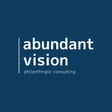
Fund the Dream, Not the Gap
Too many fundraising leaders fall into the trap of focusing on what’s missing—trying to “fund the gap” instead of casting a bold vision for what’s possible. In this solo episode, Thomas Dauber challenges nonprofit professionals to shift their mindset from scarcity to abundance. He explains why donors are more inspired by dreams than deficits, and how articulating a compelling future vision—not just this year’s shortfall—can unlock greater generosity.
Thomas unpacks what it means to dream responsibly: planning strategically, understanding true costs, involving your CFO and board, and building a roadmap donors can believe in. Whether you're a CEO, major gift officer, or faith-based ministry leader raising your own support, this episode will equip you to ask bigger, inspire more deeply, and lead with clarity.
Takeaways Include:
- Why funding a dream is more motivating than filling a budget gap
- How to answer “How much do you need?” in a visionary, donor-centric way
- What steps you must take to make your dream fundable
- How to involve your board and financial team in building a scalable growth plan
- A challenge to rethink individualized fundraising strategies in favor of collective vision
If you’re ready to grow beyond your current limits and raise more with confidence, this one’s for you.
Subscribe, share, and send this to a fellow leader who’s dreaming big.

